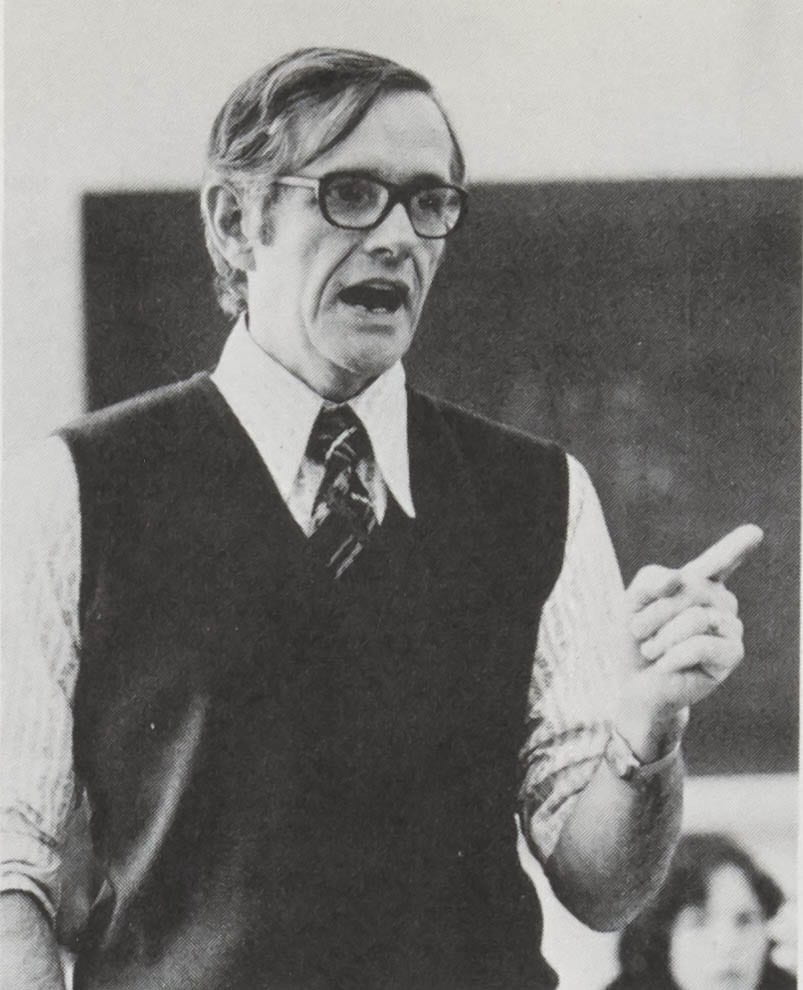Sometimes when we look back at what has made Towson University successful, it feels like it was a matter of chance: somehow the right person just happened to be in the right place at the right time.
Today we’re going to talk about how having the right person in the right place created not just two successful sports programs, but paved the way for a major that has little to do with athleticism.
In 1967, Carl Runk was hired by Towson State College (TSC) to coach the men’s lacrosse team. Runk was a native of Maryland but he’d gone to the University of Arizona to attend and play football there, and after graduating, was hired to coach men’s lacrosse. While in Arizona, one of Runk’s children contracted bacterial meningitis and lost his hearing at just 8 months old. As his son developed, the question of finding a good fit for his educational needs brought the Runks back to Maryland, and brought Carl Runk to TSC.
A year later, when the coach for the newly formed football team suddenly left campus, Runk was asked to fill that position as well. He would hold both lacrosse and football head coach positions until stepping down from the football position in 1971.

Runk was a talented lacrosse coach. In 1974, just six years after taking over the team, he led the Tigers to a College Division Championship.

But it was soon after that moment that he was instrumental with the creation of another program at Towson that has proven just as successful.
While trying to find the best educational fit for his young son, Runk and his wife found a program that encouraged his son to use sign language. In a November 24, 1977 News American article, Runk said “My wife and I had never really gotten into signing, because a lot of professionals told us we should force our son to talk.” A new school in Frederick, however, used sign language because often hearing people spoke too quickly to allow those with hearing impairments to rely solely on lip reading. “Once Curtis was enrolled at the Frederick school,” Runk said in that same article. “We felt it was necessary to learn sign language, so we could exchange thoughts with him and his friends at school.”
In the meantime, American society was changing its views of Deaf culture. Close captioning of television shows began in 1972. The passage of the Rehabilitation Act of 1973 included a section that secured the rights of people with disabilities from discrimination by entities that received federal funding — for example, schools, public housing, and public-sector employment. This section said that employers must make “reasonable accommodations” for qualified employees, which meant providing access to interpreters or technology that would assist those with hearing impairments, such as text telephones.
At TSC, this meant exploring new programs by the Communications Arts and Sciences department. Course catalogs at the time show that the department was split into “three areas of concentration. i.e., Speech Communication, Mass Communication, and Speech and Language Pathology and Audiology.” Its chair, Bill Wallace, had to balance programs that focused on public speaking with those that were more clinical in nature.

In 1975, TSC hired Barbara Laufer, a clinical audiologist. She was charged with developing a sign language program, the first of its kind for Maryland colleges.

In the fall of 1977, Runk taught a class in sign language as part of the Communication Arts and Sciences Department. For Runk, this meant working with a different department on campus. According to an October 14th Towerlight, Runk was “totally impressed with the Mass Communications Department, Dr. Wallace, and the job they’re doing over there.”
About 20 students signed up for that first class, and there was enough interest that Runk felt confident that he would be teaching it the following semester.

In 1978, Runk applied to take a half-year sabbatical so he could attend a graduate program at Gallaudet University, taking classes “in sign language, audiology and the sociology of deafness” according to a 1990 article in the Towson Times. The work he did there helped inform Laufer and Wallace as the team built a sign language program on the Towson campus.
In 1979, “Basic Sign Language” was approved as a course in the newly named and re-focused Communication Sciences and Disorders department.

For the next twenty years, Carl Runk would continue to teach at least one sign language class per semester.
And Towson University’s commitment to growing the program has led to the creation of a Deaf Studies major in 2000, and the establishment of the Department of Audiology, Speech-Language Pathology, and Deaf Studies in 2004.
Since 2013, there have been over 300 degrees awarded in Deaf Studies. Towson University also has a residential learning community designed to be immersed in American Sign Language.
As we celebrate Carl Runk for the many accomplishments he’s made at Towson University — the first varsity football coach, championship-winning lacrosse coach, and Intercollegiate Men’s Lacrosse Coaches’ Association Hall of Fame inductee for 2018 — it would be remiss not to also acknowledge his contributions to Deaf Studies on campus.
